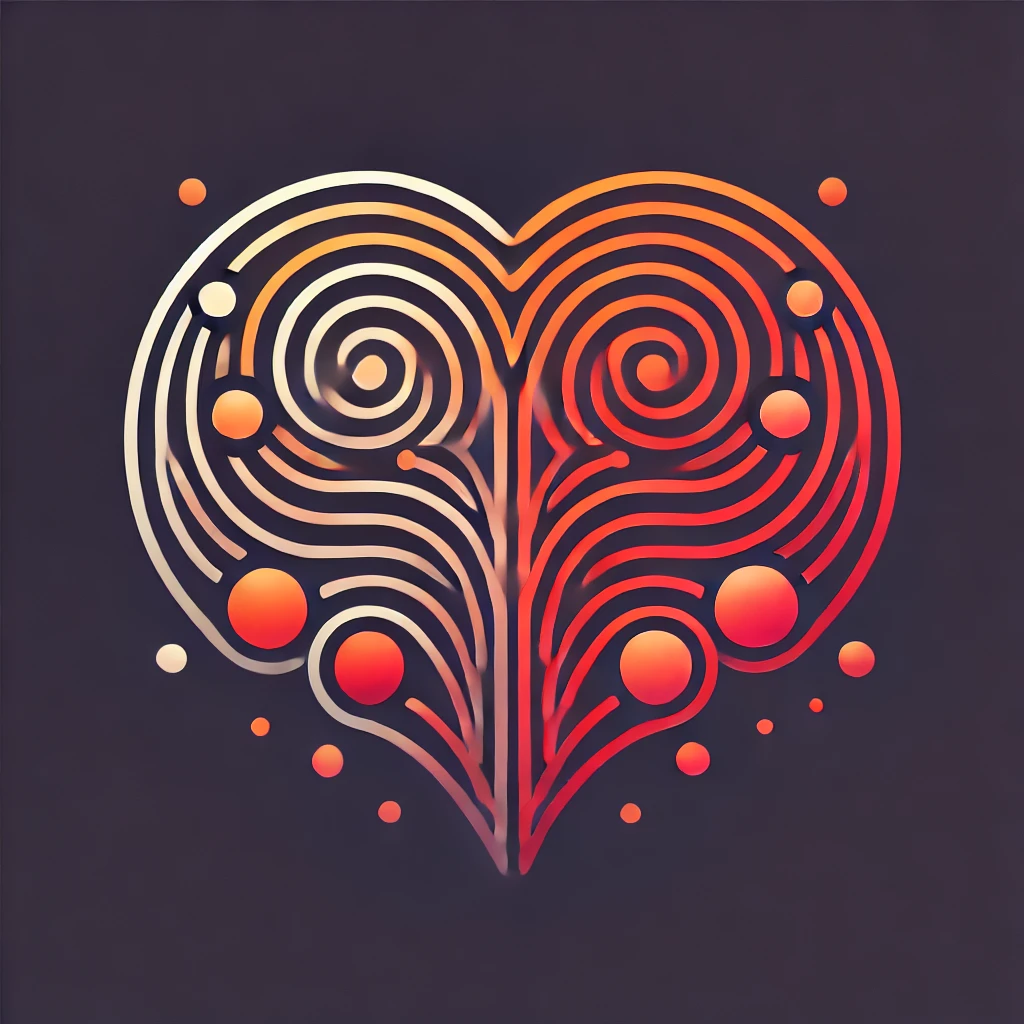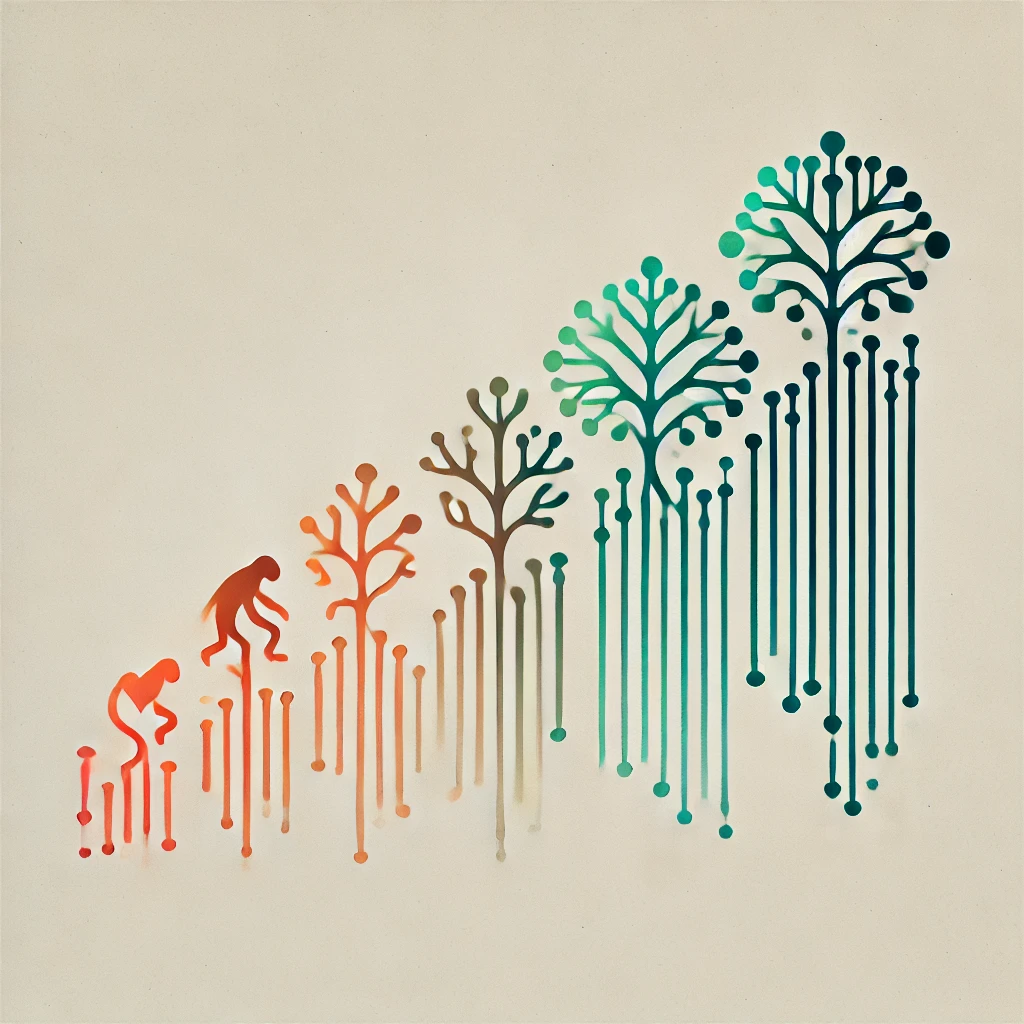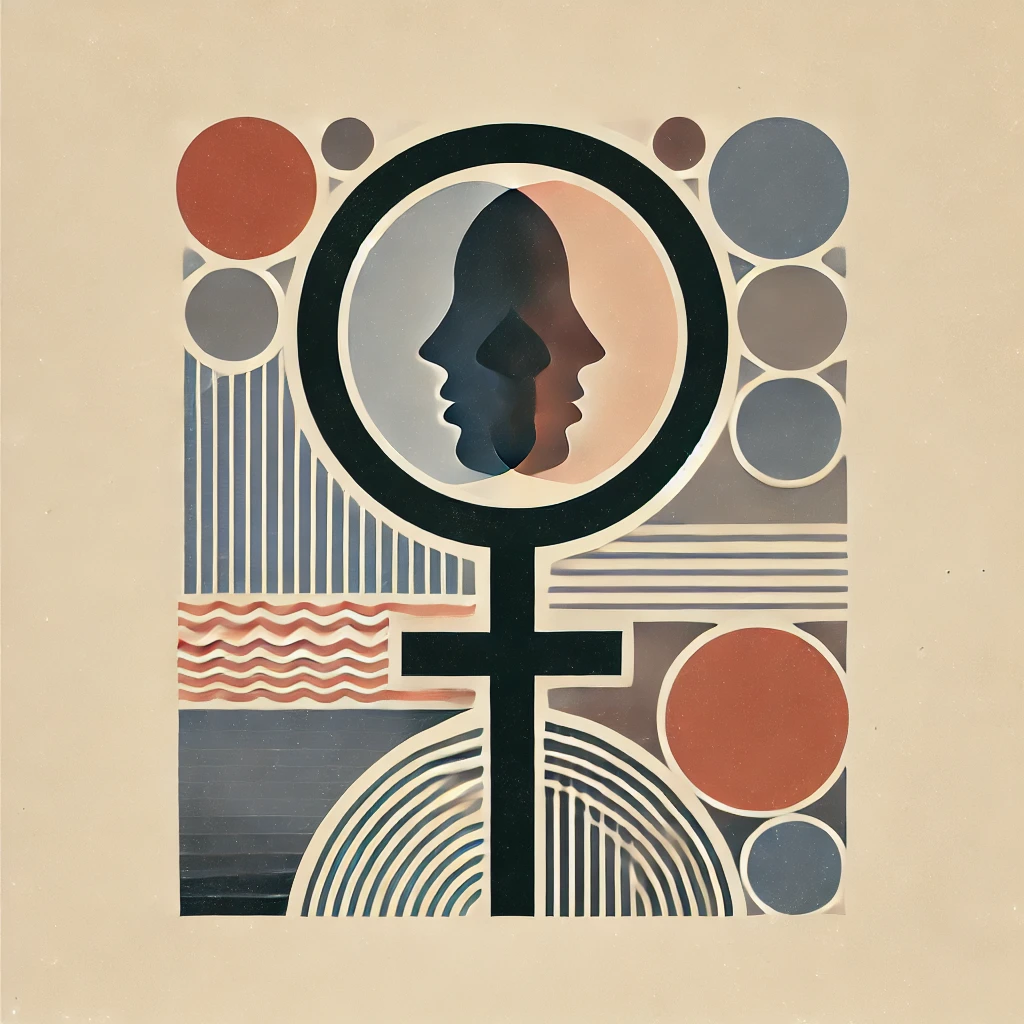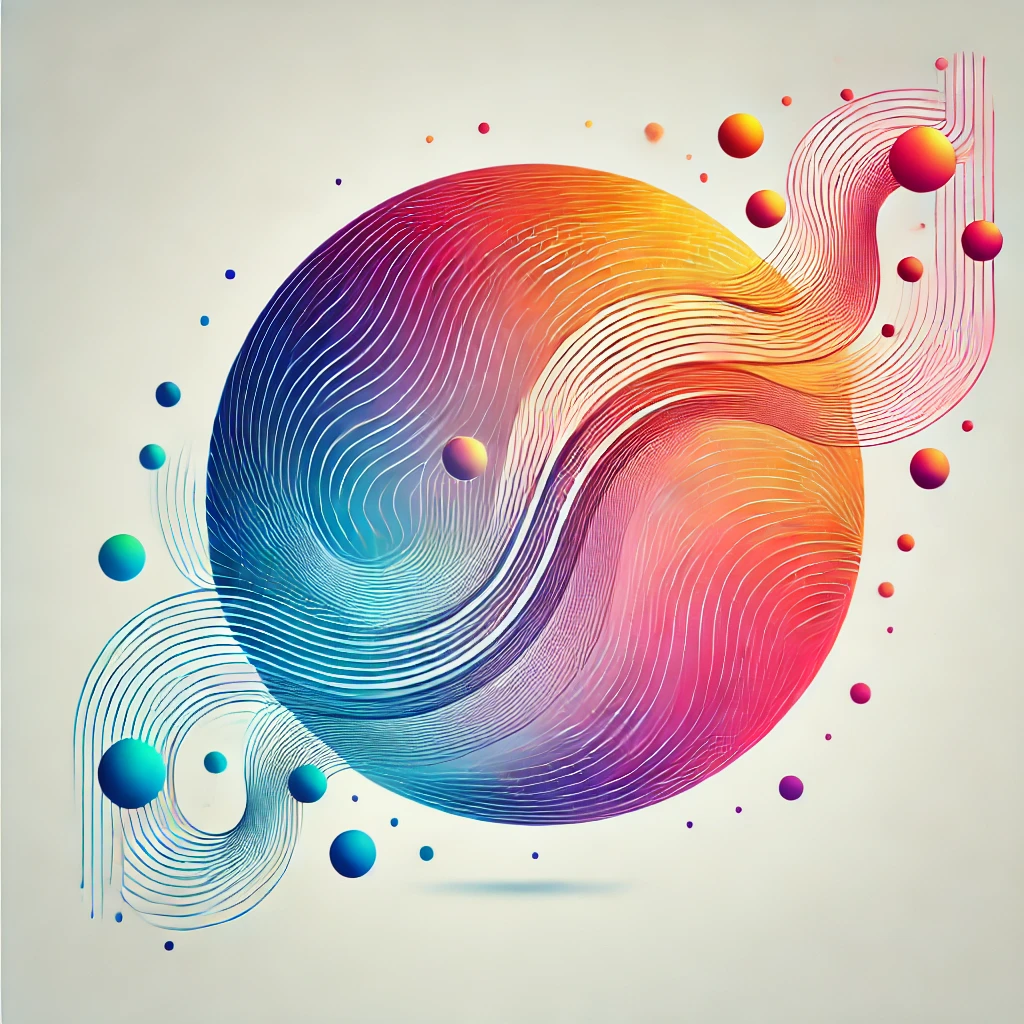*Reconceiving Love: A Multidimensional Exploration of Origins, Neuroscience, Evolution, Social Constructs, and the Spectrum of Human Experience *
Abstract
In this essay, we explore love as an intricate phenomenon that defies reduction to a single emotion or simplistic narrative. Drawing on diverse disciplines—ranging from neuroscience and evolutionary psychology to feminist theory and social constructivism—we examine how love’s origins, its underlying biological mechanisms, and its social and cultural representations interweave to create a rich tapestry of human experience. By comparing the combinatorial diversity of four nucleotides that yield thousands of genetic possibilities with the myriad biochemical and environmental interactions that shape love, we argue for a reconceptualization of romantic love as a spectrum rather than a monolithic emotion. This essay also presents examples from literature, historical paradigms, and contemporary research, advocating a rethinking of traditional love scripts that reinforces gendered power dynamics.
────────────────────────────
Introduction
Distinguished reader,
Love—an emotion, an experience, and indeed, a phenomenon of profound complexity—has captivated human inquiry for millennia. In our journey to understand love, we have often turned to origin stories, evolutionary theories, and neurological explanations. Yet, each approach offers only a partial view, leaving us with philosophical conundrums that demand an integrated perspective. The ensuing discussion will methodically address five central points: the multifaceted origins of love; the neuroscientific mechanisms that underscore its experience; the evolutionary paradigms that frame it; its characterization as a social construct; and the feminist critique that challenges traditional narratives of gender and power. In doing so, we shall also incorporate the proposition that love is not a single emotion but a spectrum—a perspective analogous to the molecular diversity emerging from four simple nucleotides forming an astonishing variety of genes. By synthesizing insights from neuroscience, evolutionary biology, social theory, and literature, this essay seeks to illuminate the dynamic interplay between biology, environment, and cultural narrative in the creation of love.
────────────────────────────

I. The Multifaceted Origins of Love: Philosophical Narratives and Historical Conundrums
Love’s genesis has been recounted through a multitude of origin stories—mythological, religious, and philosophical narratives that attempt to codify its essence and purpose. From the Platonic ideal of transcendent love to the myth of Cupid’s arrow, these accounts have served not only as cultural artifacts but also as blueprints that shape individual and collective understandings of love’s function in society.
Philosophical Conundrums and Contradictions
Notwithstanding the diversity of these stories, they often fail to resolve the inherent contradictions of love. For instance, while some narratives exalt love as the ultimate liberator of the human spirit, others reveal its potential for control, despair, or moral ambiguity. Consider the paradox in which love is both a source of immense creative power and an instigator of destructive jealousy—a duality that invites further inquiry. The ancient Greeks, for example, distinguished between eros (passionate, often obsessive love) and agape (selfless, unconditional love), highlighting the multifaceted nature of what may appear, at first glance, as a singular emotion.
Implications for Individual Lives
The implications of these origin stories are profound. They influence how individuals conceptualize their relationships and their roles within them. In many societies, the story of romantic love is entwined with the narrative of personal fulfillment and destiny, suggesting that the pursuit of love is both a moral imperative and a pathway to self-actualization. Yet, when these narratives become prescriptive, they can also lead to existential conflicts for those whose experiences do not neatly align with culturally sanctioned ideals. Such tensions underscore the need for a more nuanced understanding of love—one that transcends binary oppositions and embraces its inherent contradictions.
Examples from Literature and Culture
Literary works, from Shakespeare’s sonnets to the modern novels of Toni Morrison, exemplify these dualities. In Shakespeare’s Romeo and Juliet, love is depicted as an all-consuming force that both ennobles and devastates its protagonists, encapsulating the beauty and tragedy of passionate romance. Similarly, in contemporary literature, authors have interrogated the cultural expectations surrounding love, often highlighting the dissonance between idealized narratives and lived experience. These examples serve as a testament to the enduring complexity of love’s origins and its multifarious role in shaping human destiny.
────────────────────────────

II. Neuroscience and the Mechanisms of Romantic Love: Biology Meets Culture
In recent decades, neuroscience has sought to demystify the experience of romantic love by identifying the brain mechanisms that drive the sensations of excitement, longing, and attachment. This section examines the interplay between biological processes and cultural contexts in the orchestration of romantic love.
Neurotransmitters and Hormones
At the heart of the neurochemical basis of love lie neurotransmitters such as dopamine, oxytocin, and serotonin. Dopamine, often associated with the reward system, is implicated in the feelings of pleasure and motivation that accompany early stages of romantic attraction. Oxytocin, known colloquially as the “cuddle hormone,” is released during physical intimacy, promoting bonding and trust between partners. Serotonin, while commonly linked to mood regulation, also plays a role in the obsessive aspects of romantic attachment, as evidenced by altered serotonin levels in individuals experiencing early-stage infatuation.
Enzymatic Activity and Microbiota
Beyond these well-known molecules, enzymes facilitate the rapid biochemical reactions that modulate these neurotransmitters. Emerging research also suggests that the trillions of bacteria inhabiting our gut—our microbiota—may influence mood and emotional regulation, thereby indirectly contributing to our capacity for love. These microscopic communities are sensitive to both genetic predispositions and environmental inputs, creating a dynamic relationship that can affect emotional states and, by extension, romantic behavior.
The Cultural Modulation of Biology
While neuroscience provides compelling evidence for the biological underpinnings of love, it is equally clear that culture modulates these processes. Social norms, rituals, and shared narratives shape not only how we express love but also how we perceive and experience it. For instance, the ritualistic courting practices in certain cultures can enhance oxytocin release through structured physical and emotional intimacy, thereby reinforcing pair bonding. In contrast, societies that valorize individualism may exhibit different patterns of neurochemical activation, reflecting diverse cultural expectations and practices.
Empirical Examples
Studies employing functional magnetic resonance imaging (fMRI) have illustrated that the same regions of the brain associated with reward processing in food or drug addiction are activated during the experience of romantic love. However, cultural factors can modulate the intensity and expression of these neural activations. For example, cross-cultural research has revealed that individuals from collectivist societies may experience romantic love with a greater emphasis on relational harmony and interdependence, as opposed to the individualistic pursuit of passion prevalent in many Western cultures. This dual lens of biology and culture enriches our understanding of how love, as experienced on a neural level, is inextricably linked to the environment and social context in which it unfolds.
────────────────────────────

III. Evolutionary Perspectives on Love: Adaptation, Family Structures, and Gendered Paradigms
From an evolutionary standpoint, romantic love is frequently characterized as an adaptive mechanism—one that has evolved to promote pair bonding and ensure the survival of offspring. Yet, many of the prevailing hypotheses about love are deeply rooted in the paradigms of 20th-century nuclear family models and rigid gender roles.
Romantic Love as an Adaptation
The dominant evolutionary narrative posits that romantic love functions as an adaptation to foster long-term partnerships, thereby facilitating cooperative child-rearing. This perspective is supported by the observation that in many species, monogamous pair bonding enhances the likelihood of offspring survival. In humans, the emotional depth associated with love may have provided a selective advantage by ensuring the sustained involvement of both parents in nurturing and protecting vulnerable young.
Critiques of a Parochial Paradigm
However, it is imperative to recognize that these adaptive explanations are often grounded in a specific socio-historical context—a context defined by the rigid structures of the 20th-century nuclear family and binary gender roles. Such models tend to overlook the rich diversity of familial forms and relationship dynamics that exist across cultures and historical periods. For example, evolutionary theories that focus exclusively on heterosexual pair bonds risk marginalizing non-binary, polyamorous, or culturally variant expressions of love that have long been integral to human societies.
Gender Roles and Evolutionary Narratives
The entrenched view of romantic love as an adaptation is further complicated by its association with gendered power dynamics. Traditional evolutionary narratives often implicitly assume that males and females have distinct, predetermined roles in the realm of romantic love—a perspective that can reinforce outdated gender norms. Contemporary research in evolutionary psychology is increasingly attentive to the nuances of these roles, acknowledging that while biology may predispose certain behavioral tendencies, cultural and environmental factors play a decisive role in shaping individual and collective expressions of love.
Historical and Cultural Case Studies
Historical case studies provide ample evidence of the fluidity of familial and romantic arrangements. For instance, polyamorous societies in pre-industrial cultures, or the celebrated courtesan traditions in various Eastern societies, illustrate that love and partnership have been—and continue to be—experienced in myriad forms. Such examples challenge the universality of the nuclear family model and invite us to reconsider the evolutionary story of love in light of cultural diversity and gender equity.
────────────────────────────

IV. Love as a Social Construct: Deconstructing the Immutable Narrative
In contrast to the deterministic narratives offered by some biological and evolutionary models, the notion of love as a social construct asserts that romantic love is not an immutable human experience. Rather, it is a fluid and malleable phenomenon shaped by cultural narratives, individual choices, and societal norms.
The Constructivist Perspective
From a social constructivist perspective, the very idea of romantic love is imbued with cultural meanings that evolve over time. This view posits that our understanding of love is not fixed but is continuously reinterpreted through the prism of historical and social context. For example, the Western ideal of the “romantic soulmate” emerged during the Enlightenment and evolved through the centuries as a counterpoint to arranged marriages and mercantile alliances. Yet, even as this ideal has become entrenched in popular consciousness, it remains subject to reinterpretation and deconstruction.
Deconstructing Personal Beliefs
Recognizing love as a social construct invites individuals to deconstruct their own beliefs and expectations. In doing so, one may challenge the normative scripts that dictate what constitutes a “successful” or “true” love relationship. This process of deconstruction is liberatory—it allows one to envision alternative models of romantic partnership that are more attuned to personal needs, mutual respect, and emotional well-being. Consider, for instance, the growing acceptance of non-monogamous relationships in contemporary society. Such arrangements defy the conventional wisdom of romantic exclusivity and exemplify how a reevaluation of entrenched social narratives can open up new possibilities for intimacy and connection.
Examples from Social Movements and Literature
Social movements advocating for LGBTQ+ rights, gender equality, and alternative family structures have all contributed to reshaping the discourse around love. In literature, works such as Virginia Woolf’s Orlando or the poetry of Audre Lorde challenge traditional narratives and celebrate the multiplicity of love experiences. These cultural artifacts serve as both mirrors and catalysts for societal change, underscoring the potential for love to be reimagined in ways that transcend oppressive social constructs.
────────────────────────────

V. Feminist Critiques: Rethinking Gender, Power, and the Liberatory Potential of Love
The dominant cultural script of love has historically reinforced gender roles and perpetuated power imbalances. Feminist critiques have been instrumental in deconstructing these narratives and advocating for a reconceptualization of love as a potentially liberating force grounded in mutual recognition and respect.
Challenging Traditional Gender Roles
Traditional love narratives often assign rigid roles to partners—roles that prescribe the passive or nurturing to one and the assertive or provider to the other. Such prescriptions not only constrain individual expression but also perpetuate broader social inequalities. Feminist scholars have long argued that these gendered expectations serve to entrench patriarchal structures, limiting the scope of what it means to love and be loved. By challenging these norms, feminism paves the way for more egalitarian and fulfilling forms of romantic partnership.
Mutual Recognition and Freedom
A reimagined paradigm of love, as advocated by feminist thought, emphasizes mutual recognition, autonomy, and the freedom to define one’s own relational boundaries. In this vision, love is not a transaction based on traditional roles but a dynamic process of negotiation, respect, and shared growth. Such a perspective is evident in the burgeoning literature on egalitarian partnerships and the increasing visibility of relationship models that eschew conventional gendered expectations. For example, many modern couples actively negotiate household responsibilities, career aspirations, and personal growth trajectories in ways that reflect a commitment to mutual empowerment rather than traditional hierarchies.
Case Studies and Cultural Reflections
Historical and contemporary case studies reinforce the viability of this feminist reorientation. The transformation of relationship dynamics within progressive communities—where both partners are encouraged to pursue independent ambitions while simultaneously nurturing the relationship—illustrates the potential of love to serve as a liberatory force. Moreover, cultural productions, such as the films of directors like Céline Sciamma, challenge the heteronormative love script by presenting narratives of love that are both nuanced and emancipatory. These examples not only validate feminist critiques but also underscore the transformative potential of rethinking love beyond restrictive traditional roles.
────────────────────────────

VI. A Spectrum of Love: The Interplay of Genetics, Biochemistry, and Environment
Distinguished reader, it is essential to acknowledge that love is not a monolithic emotion but rather a spectrum, a kaleidoscopic phenomenon composed of countless shades and nuances. Just as the four nucleotides—adenine, thymine, cytosine, and guanine—combine in myriad ways to produce the rich diversity of genes, so too do neurotransmitters, hormones, enzymes, and even colonies of bacteria collaborate with environmental contexts to shape the unique expression of love in each individual.
The Molecular Mosaic of Love
At the molecular level, the orchestration of love is an exquisite symphony. Neurotransmitters such as dopamine and oxytocin create the notes of pleasure and attachment, while hormonal signals provide the tempo and rhythm of our emotional responses. Enzymes act as the conductors, ensuring that these chemical signals are produced, modulated, and degraded in precise synchrony. This intricate interplay mirrors the genetic principle wherein a limited set of building blocks gives rise to an almost infinite variety of expressions—each relationship, like a unique gene, emerges from a dynamic confluence of factors.
Environmental and Genetic Interactions
Crucially, the expression of genetic predispositions related to love is not deterministic but is profoundly influenced by environmental conditions. A person’s genetic makeup may predispose them to certain patterns of attachment or emotional sensitivity, yet these predispositions manifest differently depending on the surrounding cultural, social, and even microbial milieu. For instance, research on the gut–brain axis has revealed that the colonies of trillions of bacteria within our gastrointestinal tract can affect mood, stress responses, and ultimately, our capacity for emotional intimacy. Such findings underscore the fact that love is an emergent property of both our biological heritage and the environments in which we live.
Illustrative Examples
Consider two individuals with similar genetic predispositions for emotional sensitivity. One, raised in an environment that encourages open emotional expression and mutual support, may develop a robust capacity for forming deep, resilient romantic bonds. The other, immersed in a context characterized by emotional suppression and rigid social norms, may experience a stunted expression of that same predisposition, resulting in relationships marked by conflict or emotional withdrawal. These divergent outcomes illustrate that love, much like gene expression, is contingent upon the dynamic interplay between intrinsic biological factors and extrinsic environmental conditions.
Implications for Contemporary Understanding
This recognition of love as a spectrum—an emergent property of genetic, biochemical, and environmental interactions—challenges reductionist narratives that attempt to pigeonhole love into a singular emotion or fixed script. It invites us to appreciate the variability and fluidity inherent in romantic relationships and to adopt a more individualized and holistic perspective on what it means to love and be loved. The metaphor of the four nucleotides underscores the beauty of complexity: from a limited set of elements emerges an infinite array of possibilities, each as unique and dynamic as the human experience itself.
────────────────────────────

Takeaway
In synthesizing the multifarious perspectives discussed herein, it becomes evident that love is a phenomenon of unparalleled complexity—an ever-evolving interplay of historical narratives, neurobiological mechanisms, evolutionary adaptations, social constructs, and feminist critiques. Each dimension, while providing valuable insights, is but one facet of a phenomenon that defies simplistic categorization. Love’s origins are steeped in myth and philosophy; its expression is governed by neurochemical and hormonal processes modulated by culture; and its societal representation has been both a source of empowerment and a tool of oppression.
As we have explored, the dominant narratives that have long defined romantic love—whether rooted in the evolutionary imperatives of a bygone era or the constraining scripts of gendered power dynamics—must be revisited and reimagined. Recognizing love as a spectrum, akin to the genetic diversity arising from the interplay of a few fundamental components, opens up a realm of possibilities for more personalized and egalitarian expressions of romantic intimacy. In embracing this perspective, we allow ourselves to deconstruct inherited myths, challenge normative expectations, and ultimately, foster relationships that are as multifaceted and dynamic as the human beings who form them.
For the contemporary scholar, clinician, or simply the reflective individual, this reconceptualization of love offers a liberatory vision: one in which love is not an immutable dictate of biology or tradition but a living, breathing mosaic—ever adaptable, continuously evolving, and boundlessly rich in its potential to nurture, transform, and inspire.
────────────────────────────
Final Reflections
In conclusion, as you reflect upon these dimensions, consider that our understanding of love must remain as fluid and multifaceted as the phenomenon itself. The integration of neuroscience, evolutionary theory, social constructivism, and feminist thought challenges us to move beyond reductionist models and to appreciate love in its full complexity. By acknowledging the myriad shades that comprise the spectrum of love, we not only gain a deeper understanding of our emotional lives but also empower ourselves to forge relationships that honor individuality, promote mutual freedom, and celebrate the beautiful intricacy of human connection.
References
May this essay serve as both a scholarly exploration and an invitation to continuously rethink and redefine the ways in which we experience and express love in the modern world.
—-Below is a list of references that complement and inform the multifaceted perspectives discussed in the essay:
- Acevedo, B. P., Aron, A., Fisher, H. E., & Brown, L. L. (2012). Neural correlates of long-term intense romantic love. Social Cognitive and Affective Neuroscience, 7(2), 145–159.
This study explores the enduring neural patterns associated with deep romantic bonds, underscoring the biological basis of long-term love. - Bartels, A., & Zeki, S. (2000). The neural basis of romantic love. Neuroreport, 11(17), 3829–3834.
An investigation into the brain regions activated during romantic experiences, highlighting the overlap between neural reward systems and the emotions of love. - Buss, D. M. (1994). The Evolution of Desire: Strategies of Human Mating. New York, NY: Basic Books.
A seminal work in evolutionary psychology that discusses the adaptive functions of romantic love and mating strategies across human societies. - Butler, J. (1990). Gender Trouble: Feminism and the Subversion of Identity. New York, NY: Routledge.
A foundational text in feminist theory that challenges traditional gender roles and provides a framework for rethinking power dynamics in relationships. - Fisher, H. (2004). Why We Love: The Nature and Chemistry of Romantic Love. New York, NY: Henry Holt and Company.
A comprehensive exploration of the biochemical and neurochemical processes underlying romantic attraction and love. - Fisher, H., Aron, A., & Brown, L. L. (2005). Romantic love: A mammalian brain system for mate choice. Philosophical Transactions of the Royal Society B: Biological Sciences, 361(1476), 2173–2186.
This article provides an evolutionary and neuroscientific perspective on how romantic love may have developed as a mechanism for mate selection. - Foucault, M. (1978). The History of Sexuality, Vol. 1: An Introduction. New York, NY: Pantheon Books.
A critical examination of how cultural narratives and social constructs shape our understanding of sexuality and love. - hooks, b. (2000). All About Love: New Visions. New York, NY: William Morrow.
An influential work that redefines love beyond traditional confines and advocates for its role as a transformative, liberatory force. - Richerson, P. J., & Boyd, R. (2005). Not By Genes Alone: How Culture Transformed Human Evolution. Chicago, IL: University of Chicago Press.
This book illustrates the interplay between genetic predispositions and cultural influences, a concept integral to understanding love as a dynamic spectrum. - Cryan, J. F., & Dinan, T. G. (2012). Mind-altering microorganisms: The impact of the gut microbiota on brain and behaviour. Nature Reviews Neuroscience, 13(10), 701–712.
An insightful review of how gut microbiota may influence mood and behavior, indirectly contributing to the complex emotional tapestry of love. - Shakespeare, W. (1597). Romeo and Juliet.
A literary classic that encapsulates the passionate, often tragic dimensions of romantic love, serving as a cultural touchstone for centuries. - Woolf, V. (1928). Orlando: A Biography. London, UK: Hogarth Press.
A work of literature that challenges conventional narratives of gender and love, aligning with the idea of love as a multifaceted and evolving experience. These references collectively offer a comprehensive backdrop for understanding love through biological, evolutionary, social, feminist, and literary lenses. They provide valuable insights into the intricate interplay between our genetic makeup, neurobiological processes, cultural narratives, and personal experiences in shaping the many shades of love.
Below is a curated list of five seminal books that offer profound insights into the multifaceted nature of love—from its philosophical and psychological dimensions to its neurobiological and cultural underpinnings. Each title has been selected not only for its scholarly rigor but also for its capacity to provoke thought and inspire a more expansive understanding of love as an evolving, dynamic phenomenon.
- The Art of Loving by Erich Fromm (1956)
Fromm’s classic work transcends conventional definitions of love, arguing that love is not merely a passive experience but an active, intentional practice. In this seminal text, the author explores love’s philosophical, psychological, and ethical dimensions, providing a framework that encourages readers to cultivate a deeper, more mature capacity for care, responsibility, and understanding in relationships. - Why We Love: The Nature and Chemistry of Romantic Love by Helen Fisher (2004)
In this authoritative exploration of the neurobiology of love, Fisher delves into the biochemical processes that underlie romantic attachment. With a compelling blend of scientific inquiry and accessible narrative, this book elucidates how neurotransmitters and hormones shape the experience of love, offering insights into why love feels so powerful and transformative. - The Evolution of Desire: Strategies of Human Mating by David M. Buss (1994)
Buss presents a comprehensive evolutionary perspective on human mating and love, arguing that the strategies we employ in romantic relationships have been shaped by evolutionary pressures. Through cross-cultural research and comparative analysis, this work challenges conventional wisdom and reveals the adaptive nature of romantic behavior, underscoring the interplay between biology and social dynamics. - All About Love: New Visions by bell hooks (2000)
bell hooks’ groundbreaking text redefines the concept of love beyond traditional, often restrictive cultural narratives. By integrating feminist thought with personal reflection and social critique, hooks advocates for an understanding of love as an emancipatory force that has the potential to heal and transform individuals and communities. This book invites readers to reconsider how love can be both a personal and political act. - Not By Genes Alone: How Culture Transformed Human Evolution by Peter J. Richerson and Robert Boyd (2005)
While not exclusively focused on love, this thought-provoking work offers essential insights into the complex relationship between genetic predispositions and cultural evolution. Richerson and Boyd examine how culture shapes human behavior—and, by extension, the ways in which we experience love. This book provides a broader context for understanding love as a phenomenon that emerges from the dynamic interplay of biology, environment, and cultural innovation. Each of these texts contributes a unique perspective to the ongoing conversation about love, encouraging readers to embrace its complexity and to reconsider conventional narratives. Whether you are seeking an understanding of love from a biological standpoint, a philosophical inquiry into its nature, or a critical reimagining of its social constructs, these works collectively offer a comprehensive foundation for further exploration.